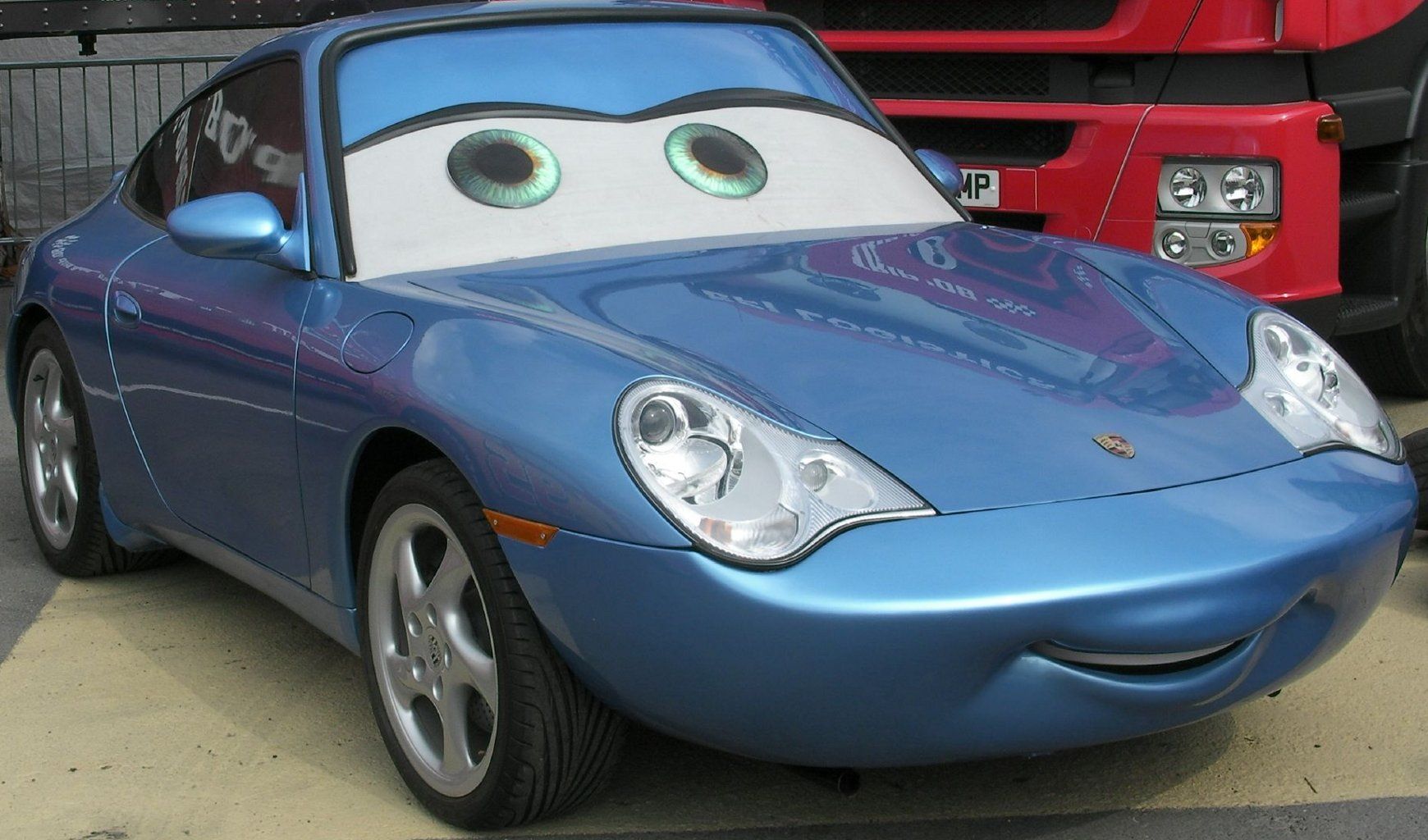
The roar of an engine, the glint of chrome under the Hollywood lights, the thrilling chase sequence that leaves you breathless – for decades, cinema has understood the unparalleled magnetism of the automobile. Cars in movies are not merely background elements; they often serve as pivotal characters, silent storytellers, and enduring symbols, becoming as famous, if not more so, than the actors who drive them. This profound connection between film and automotive culture has driven parallel growth, evolving from niche interests into widespread phenomena.
As families increasingly embraced car ownership, it opened up new avenues for leisure, including the simple pleasure of going to the movies. This intertwined history, propelled by advancing technology, has forever changed how films are made and how cars are perceived. The cinematic landscape is brimming with incredible vehicles, each imbued with a unique aura that transcends the screen.
Indeed, driving one of these iconic cinematic machines is more than just a journey; it is an immersive experience, a direct leap into the narrative itself. We have meticulously selected vehicles that did not merely appear on screen but genuinely defined a generation. Get ready to rev your engines as we celebrate these automotive titans of the silver screen!

1. **Aston Martin DB5 (The James Bond series)** No character and no car are perhaps as perfectly intertwined in cinematic history as James Bond and the Aston Martin DB5. This partnership originated from a fan’s suggestion to Ian Fleming regarding Bond’s car in the original Goldfinger novel. When the book was adapted into the iconic 1964 film starring Sean Connery, Bond was appropriately upgraded to the latest model, the DB5, and the rest, as they say, is history.
This vehicle is a veritable beast of a sports car, even before Q Branch undertakes modifications. The Aston Martin DB5 simply embodies everything that defines James Bond: unparalleled luxury, thrilling adventure, and an exotic mystique. It is an elegantly designed machine that never compromises on performance, representing the sophistication and raw power that Bond himself epitomizes.
Its indelible presence in Goldfinger solidified its legendary status, setting a precedent for all future Bond vehicles. Since that groundbreaking appearance, the DB5 has appeared on screen alongside other Bonds, including Pierce Brosnan and Daniel Craig, demonstrating its timeless appeal. While Agent 007 may occasionally drive other cars, nothing else compares for a double-O agent. The DB5 is not just a car; it is a statement, a rolling emblem of timeless espionage cool.
Read more about: 12 Iconic Rides from Movies & TV That Drove Straight Into Our Hearts
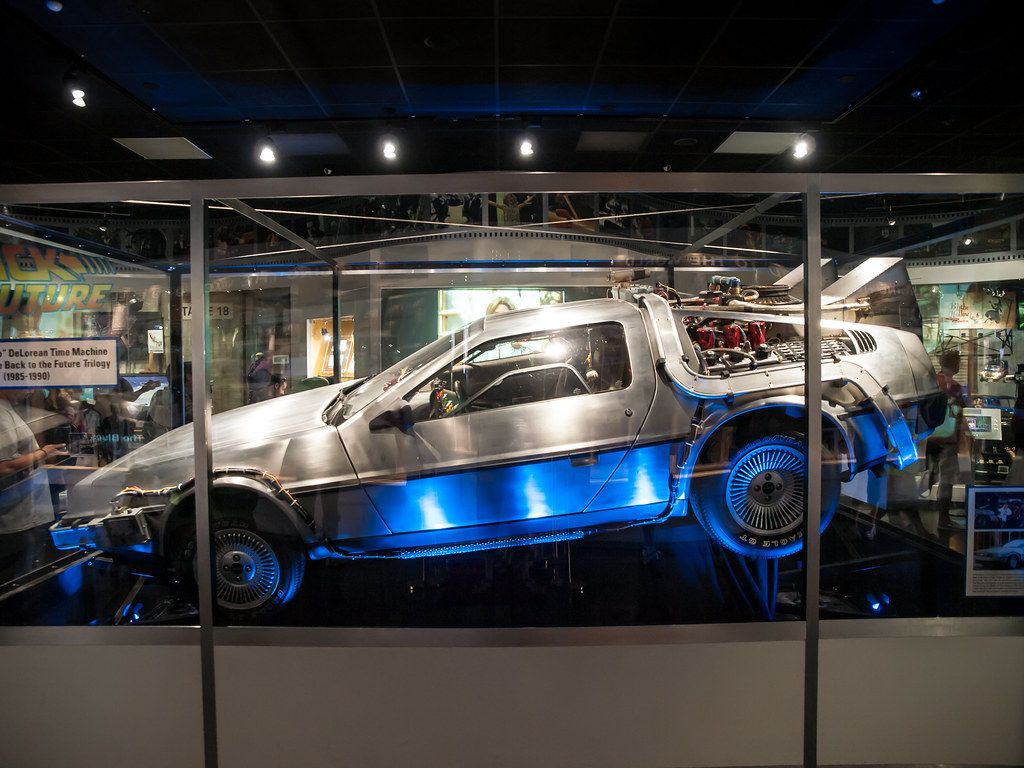
2. **DMC DeLorean (Back to the Future trilogy, 1985-1990)** For countless movie enthusiasts, no car is as iconic as the DMC DeLorean from the Back to the Future series. This two-seater sports car, sometimes referred to as the DMC-12, had an incredibly brief commercial lifespan, being available only between 1981 and 1982. Yet, despite its fleeting real-world presence, it attained worldwide fame as the extraordinary vehicle that Doc Brown modifies into a time machine.
It is this unique cinematic transformation that enables Marty McFly to journey through time across the beloved trilogy. Director Robert Zemeckis’s decision to select the DeLorean for the time machine was a stroke of genius, motivated by its unique design—particularly its gull-wing doors and stainless-steel body. This marked a significant departure from earlier script ideas that contemplated using a more mundane device.
Interestingly, when Ford proposed a sponsorship to use a Mustang, screenwriter Bob Gale famously rejected the idea, stating, “Doc Brown doesn’t drive a… Mustang!” Despite its real-world limitations, including a low 130 horsepower and a heavy body, its unique appearance ensured that it would forever be recognized. Especially as it approached the crucial 88 mph required for temporal displacement, thus securing its legendary status in pop culture.
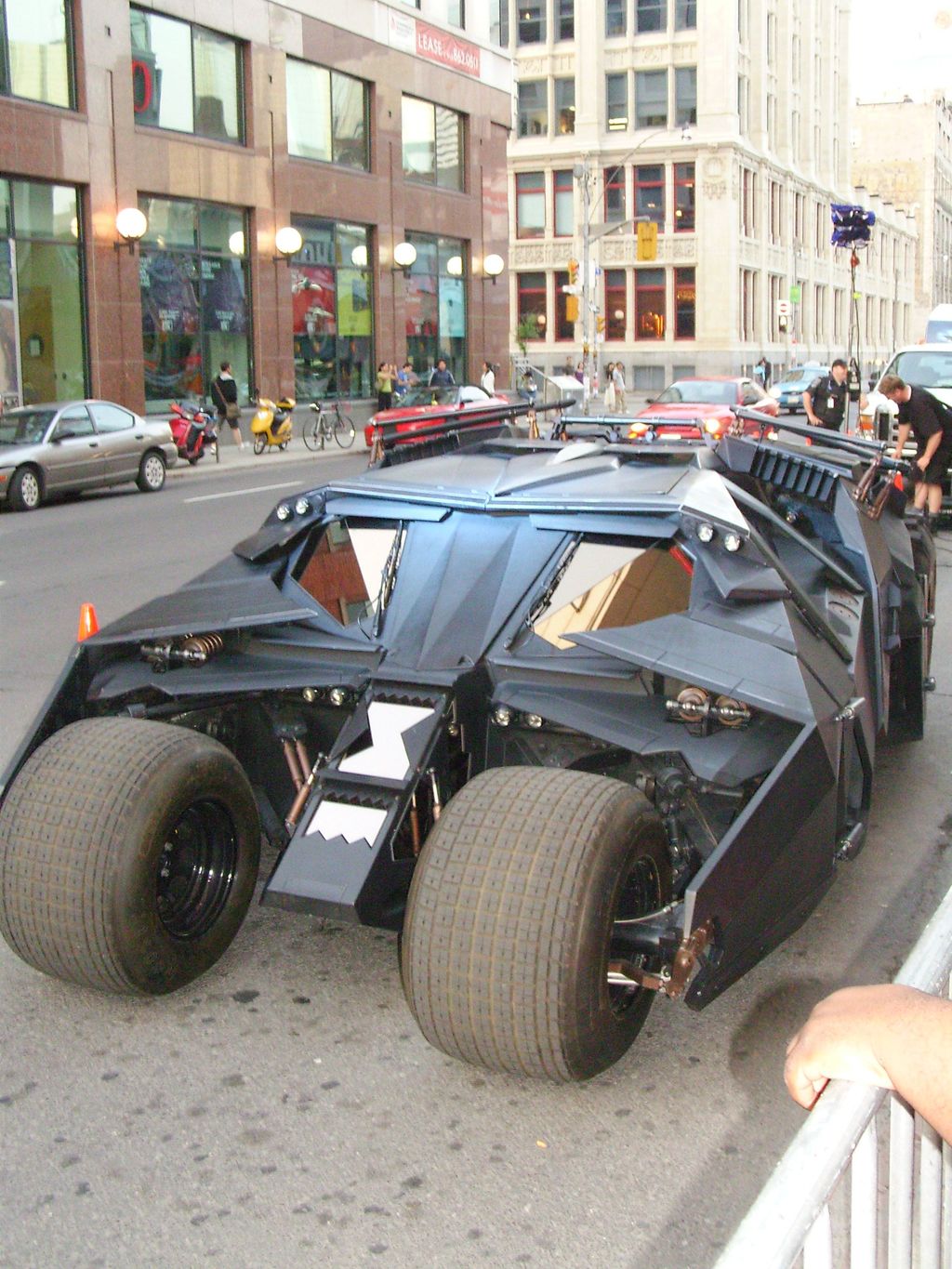
3. **The Tumbler (Batman Begins, 2005)** When Christopher Nolan reimagined Batman for the 21st century with “Batman Begins,” his vision for the Batmobile was nothing less than revolutionary. Officially designated as “The Tumbler,” this iteration represented a stark departure from the previously sleek, sports car-like Batmobiles. Nolan and production designer Nathan Crowley drew inspiration from Frank Miller’s tank-like Batmobile, grounding it in military functionality.
The result was a formidable hybrid, characterized as a cross between a Lamborghini and a Humvee, operating like a wrecking ball on wheels. Yet, remarkably, it also demonstrated an astonishing capability as a stealth machine, eluding detection by police scanners and escaping human sight. This duality of brute force and elusive invisibility perfectly underscored the new, grittier approach to Gotham’s protector.
The Tumbler was not merely a modified car; it was a completely original, custom-built vehicle, meticulously constructed by a team of 20 in Britain. Powering this formidable machine was a robust 350 cubic inch, 5.7-liter Chevy engine, generating an impressive 400 bhp. The Tumbler unequivocally proved that Nolan’s Batman was tailored for a new era, embodying a grounded realism that redefined what a superhero vehicle could be.
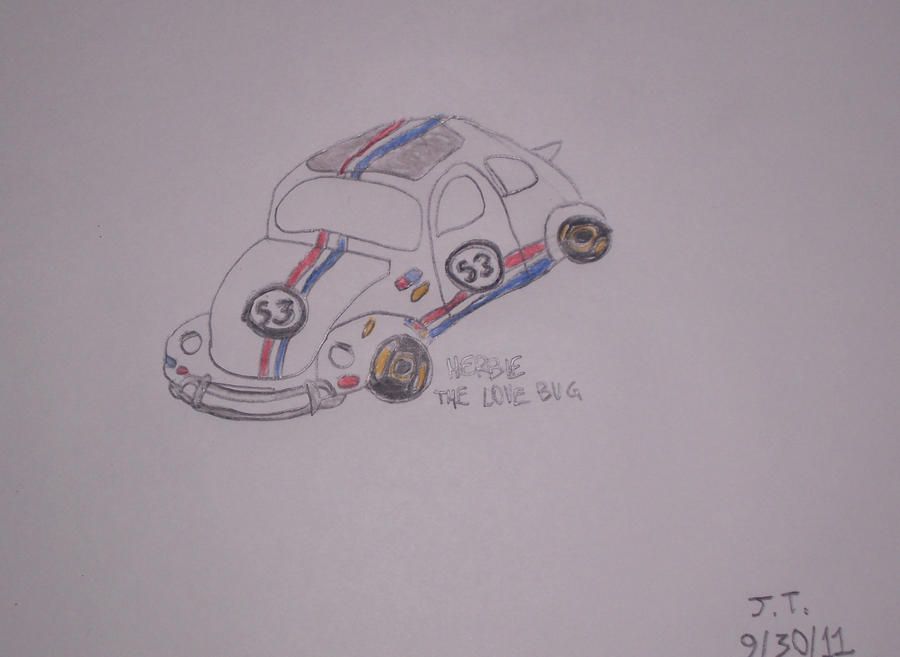
4. **1963 Volkswagen Beetle, aka “Herbie the Love Bug” (The Love Bug, 1969)** Before Disney’s “Cars” franchise, there existed Herbie the Love Bug, a truly sentient Volkswagen Beetle that captured hearts across the globe. Making its debut in the 1968 film “The Love Bug,” Herbie was not merely a car; he was a lovable, silent character whose vibrant personality was manifested through his highly limited, yet remarkably expressive, actions. His moods and intentions were conveyed via subtle movements.
Visually, Herbie is immediately recognizable, characterized by his signature red, white, and blue racing stripes running over his pearl-white body, complemented by the bold number 53. This distinctive livery became as renowned as the Beetle itself, transforming an already well – liked car into a veritable star. His prowess as a racing vehicle added another dimension to his charm, demonstrating remarkable agility and unexpected speed.
While the Volkswagen Beetle already boasted a prolific history, Herbie augmented its presence even more. He transmuted the modest Beetle from an economical family car into a symbol of the endearing underdog spirit and unwavering loyalty. He demonstrated that even a small, unassuming car could possess an enormous heart and incredible talent, rendering it a truly unforgettable cinematic icon for generations.
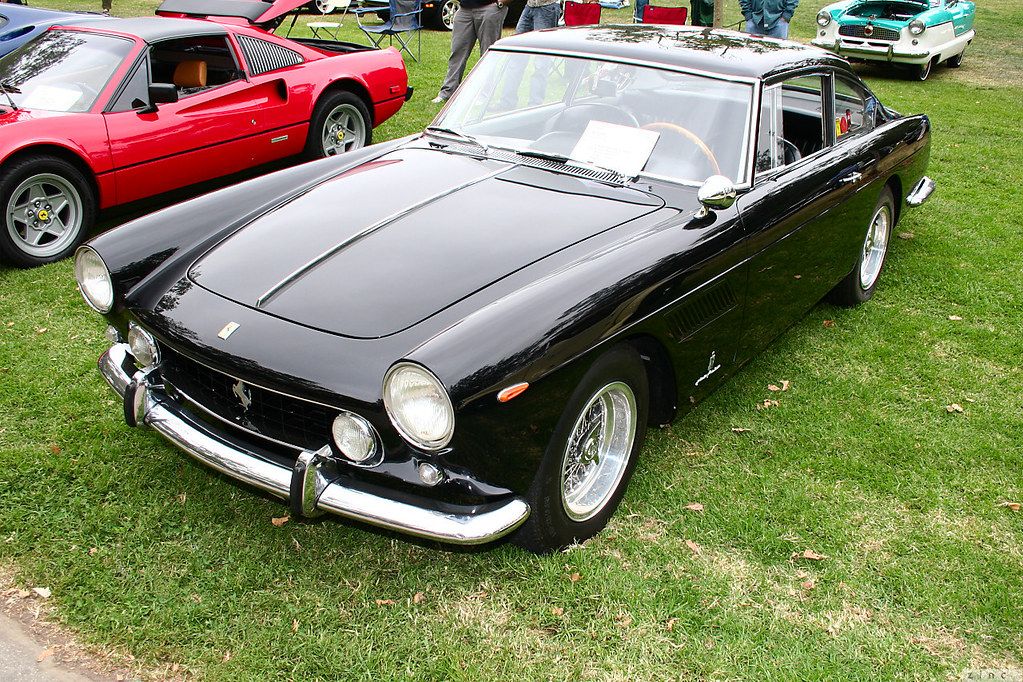
5. **1961 Ferrari 250 GT California Spyder (Ferris Bueller’s Day Off, 1986)** In John Hughes’ quintessential teen film, “Ferris Bueller’s Day Off,” the immaculate 1961 Ferrari 250 GT California Spyder, which belongs to Cameron’s unseen father, becomes a potent metaphor. This cherished possession, seemingly valued more highly than his own family, encapsulates the formidable burden of exalted parental expectations. It also represents the intrusive materialistic obsessions that disrupt the sanctity of one’s domestic life.
The car itself is a masterpiece of automotive design, a stunning testament to Italian artisanship and an indisputable symbol of unattainable luxury. Its inclusion in the film elevates its status, transforming it into an object of both intense yearning and, ultimately, catharsis. Its sleek lines and powerful engine symbolize a world in which Cameron feels entrapped, a world from which he must eventually break free.
The most memorable aspect of the movie is the frantic attempt to reverse the car’s accumulated mileage, which spectacularly misfires. The Ferrari ultimately backs up and falls out of the elevated garage, plummeting to its demise. Yet, amid this destruction, Cameron discovers his turning point, confronting his father fearlessly. This audacious move delivers a poignant lesson, demonstrating how the image of this iconic Ferrari is deeply embedded, even as audiences may overlook the film’s profound commentary.
Read more about: From Batmobile to DeLorean: The 16 Most Iconic Movie Cars Ever
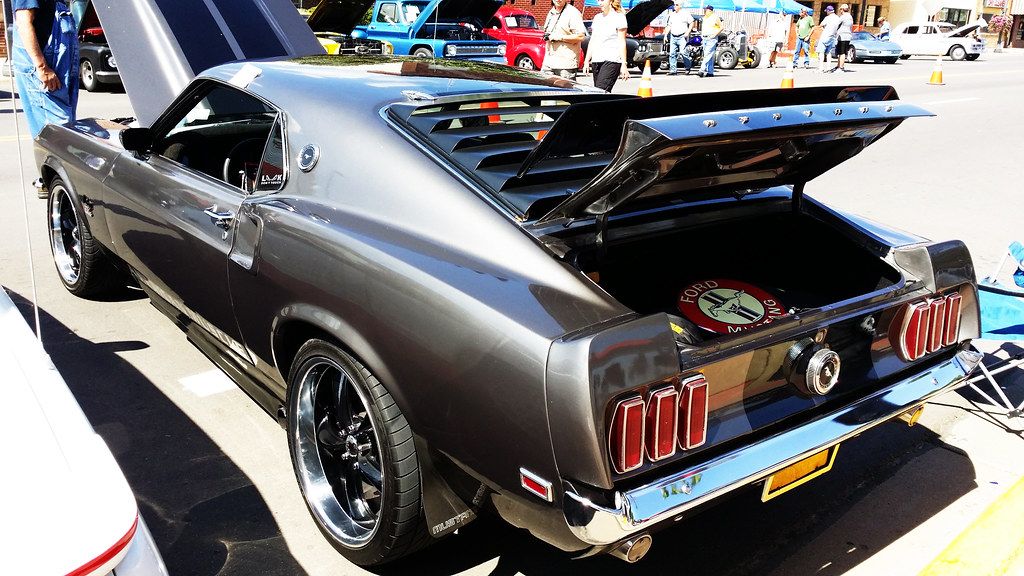
6. **1969 Boss 429 Mustang (John Wick, 2014)** While Keanu Reeves’ John Wick may not be the first action hero to drive a Ford Mustang, there is an undeniable sense that he would not care. The car he drives, the 1969 Boss 429 Mustang, is a legend: a highly valuable and powerful variant. It was produced in limited quantities, primarily for NASCAR competition, which renders it a rare and formidable machine.
Due to its extreme rarity and value, the filmmakers utilized a Mustang Mach 1 for the on-screen action; this vehicle itself is also very formidable. However, on screen, it is depicted as the Boss 429. This specific detail is of crucial importance for understanding the character of John Wick and the symbolic significance the car holds.
The Boss 429 is lethal in its inherent capability, exudes effortless coolness in its presence, and is almost unique. Does that not sound remarkably similar to a certain sharply dressed assassin himself? The car perfectly reflects John Wick’s persona: precise, devastatingly effective, and possessing a distinctive aura. This connection elevates the Boss 429 beyond mere means of transportation, making it an integral extension of the Baba Yaga’s formidable legend.
Read more about: From Batmobile to DeLorean: The 16 Most Iconic Movie Cars Ever
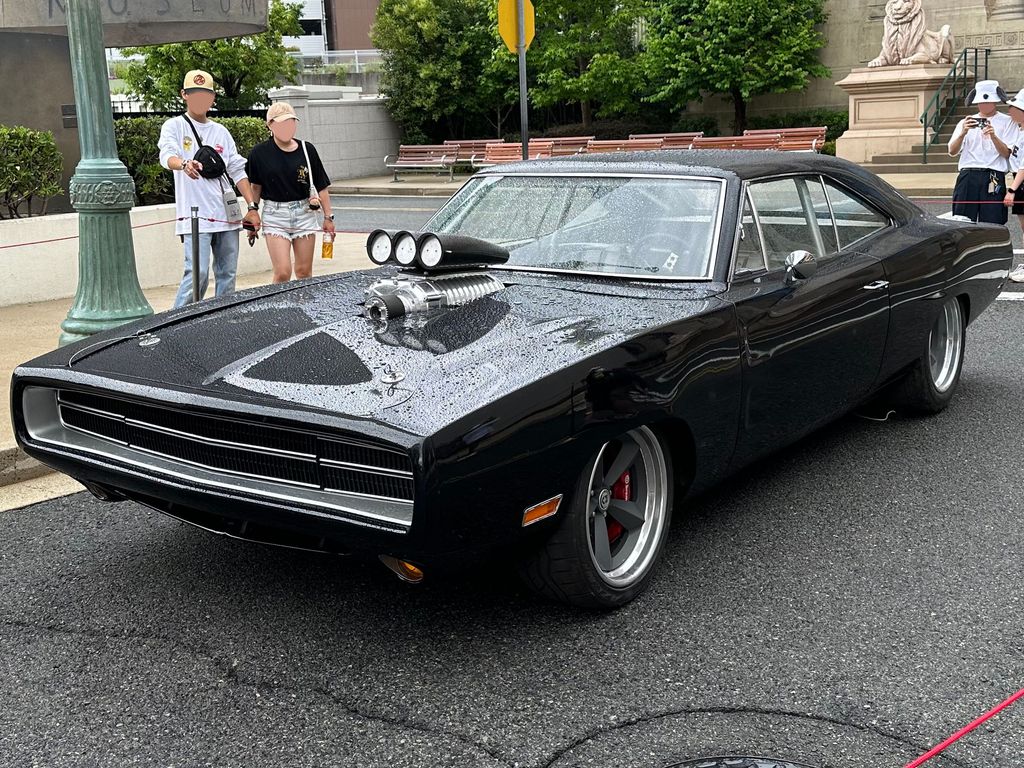
7. **1970 Dodge Charger (The Fast and the Furious)** For those who live their lives a quarter mile at a time, there is no more definitive ride than a Dodge Charger, especially when it is driven by Dominic Toretto. While the “General Lee” popularized the Charger, it was Vin Diesel’s Dom Toretto who elevated the 1970 Dodge Charger to a status of coolness for a new generation with the 2001 film “The Fast and the Furious.”
This car is more than just a vehicle; it is practically a character in itself, steeped in personal history, emotional significance, and raw power. It represents his past, his family, and his identity. Although it met a seemingly tragic end, being wrecked in a race against Brian O’Conner, the Charger’s story was far from over.
In a testament to its enduring iconic status and Dom’s unbreakable bond with it, the car has miraculously reappeared in almost every subsequent Fast and Furious sequel. From Tokyo to London, and even the Arctic, Dom’s Charger has been his faithful companion, seemingly running on the power of family. Its recurring presence serves as a visual shorthand for resilience, loyalty, and the explosive action that defines the Fast Saga, making it an undeniable cornerstone of modern automotive cinema.
Our cinematic journey through the most iconic movie cars does not end with the legends we have already celebrated. Indeed, the silver screen is replete with a diverse array of automotive marvels, each possessing a distinctive design and broader cultural significance that continues to inspire enduring fan appreciation. From monstrous custom builds to charming vintage vans, these vehicles did not just appear on screen; they etched themselves into our memories, becoming unforgettable parts of the stories they helped tell.
Now, let us continue to explore seven more iconic vehicles that defined their generations, examining their unique contributions to film and the enduring impact they have had on enthusiasts worldwide.
Read more about: From Batmobile to DeLorean: The 16 Most Iconic Movie Cars Ever
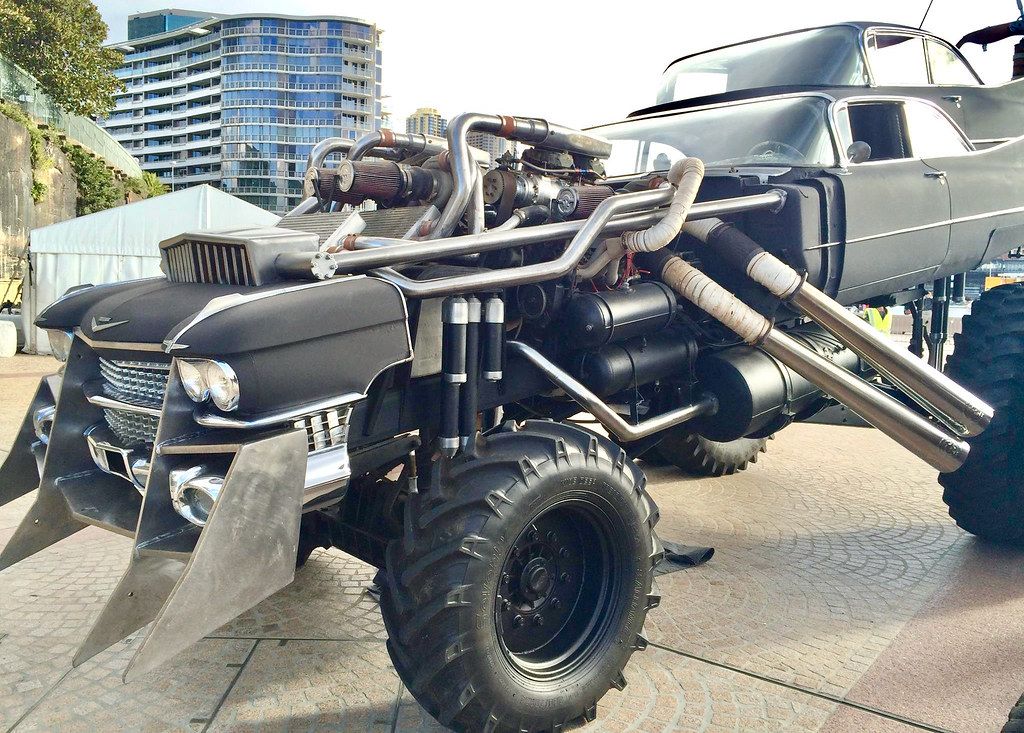
8. **The Gigahorse (Mad Max Fury Road, 2005)** If ever a vehicle perfectly encapsulated the raw, untamed spirit of heavy metal music, it would be the Gigahorse from George Miller’s modern classic, Mad Max: Fury Road. This is no ordinary car; it is the grotesque yet undeniably impressive crown jewel of Immortan Joe’s formidable armada, serving as his personal and terrifying conveyance across the desolate wastes. It is a true monstrosity, constructed from two 1959 Cadillac Coupe de Villes, crudely stacked one atop the other in an utterly unholy manner.
Adding to its overwhelming presence are its gargantuan tractor tires, with the rear wheels measuring a staggering 70 inches in diameter. The Gigahorse is the epitome of power expressed in the most gaudy and terrifying way imaginable, a rolling fortress designed to inspire fear and project absolute dominance. While earlier concepts for the vehicle considered even more alarming features, such as turret guns, these were ultimately scrapped owing to both practical considerations and the internal logic of the film’s post-apocalyptic world. Its sheer, intimidating presence on screen, hurtling at full speed, remains one of the film’s most striking visual statements.
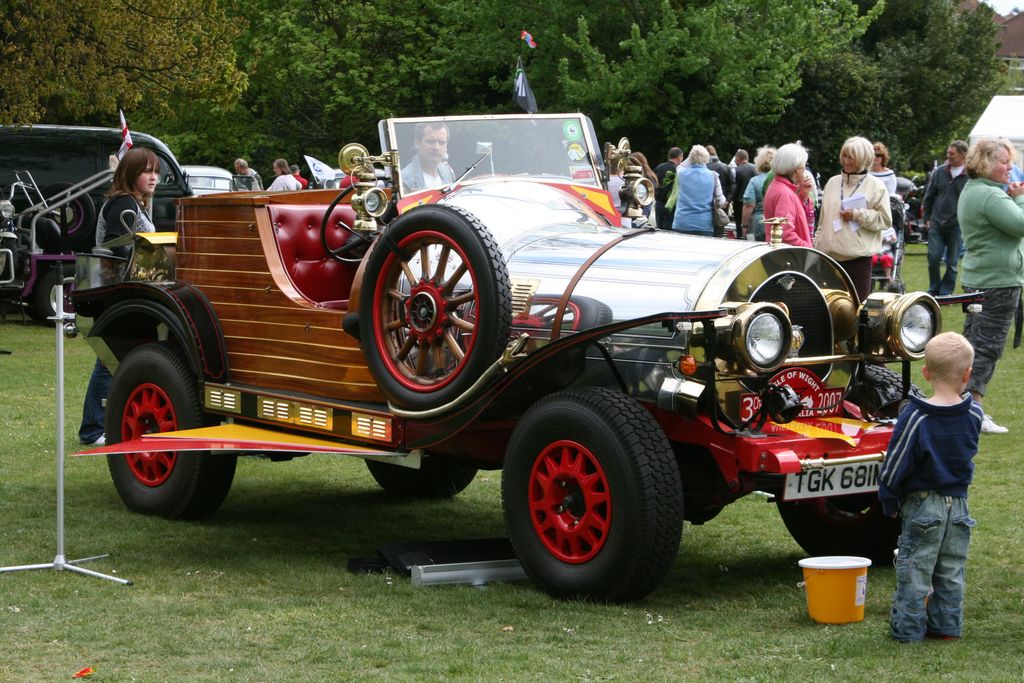
9. **Chitty Chitty Bang Bang (Chitty Chitty Bang Bang, 1968)** The name might sound a little mischievous, but Chitty Chitty Bang Bang is undeniably one of the most beloved and fantastical cars in cinematic history. This magical race car, capable of flight, soared into the hearts of audiences in the celebrated 1968 film version starring Dick Van Dyke, which was adapted from James Bond creator Ian Fleming’s children’s book. Fleming himself was inspired to feature such a unique vehicle by several real-life British racing cars, whose engines produced such a distinct and loud sound that it gave rise to the car’s peculiar name.
Intriguingly, there are also whispers that the name itself might originate from a bawdy World War I song, adding another layer of quirky history to this iconic machine. Regardless of its exact etymology, Chitty Chitty Bang Bang is a steampunk enthusiast’s dream, notable for its distinctive wooden chassis and impressive aeronautical engine. Dick Van Dyke, who actually drove the car for the film, famously recalled in a 2011 interview with the Los Angeles Times that it was “difficult to maneuver,” likening the experience to trying to steer a battleship. Its whimsical charm and impossible capabilities have ensured its place in the pantheon of iconic movie vehicles.
Read more about: Gears of Nostalgia: Iconic Movie and TV Cars That Still Drive Our Memories
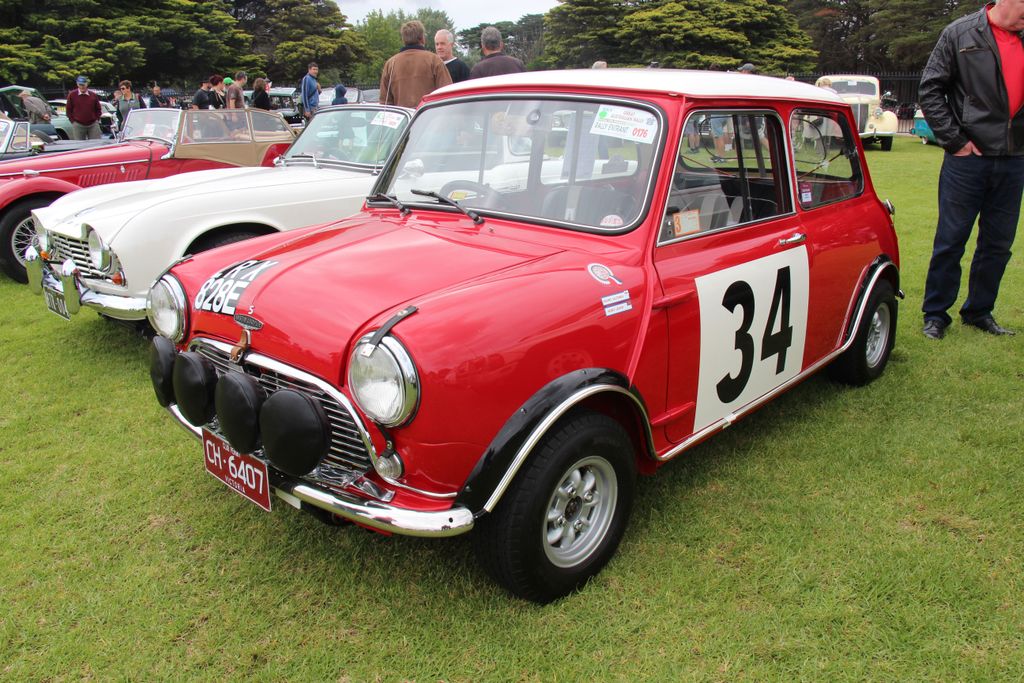
10. **1967 Austin Mini Cooper S (The Italian Job, 1969)** To star in one of the most elaborate and unforgettable chase scenes of all time is a surefire way for any car to secure its place in cinematic immortality. In the iconic 1969 British comedy crime film The Italian Job, several variants of the Austin Mini Cooper S take center stage, speeding through Italy’s streets and terrifying pedestrians with their incredible agility. Audiences, however, were left amused and marveling at how these tiny, nimble vehicles could maneuver so expertly around tight roads and narrow alleys.
While the 2003 Hollywood remake also featured reborn Minis—specifically 1997 models that were actually modified for the film to become electric vehicles—many fans agree that the original Minis seen in the 1969 movie simply cannot be surpassed. These compact powerhouses became synonymous with British pop culture of that swinging decade, embodying a cool, cheeky spirit that perfectly matched the film’s heist antics. Their enduring appeal lies not just in their on-screen heroics, but also in their status as a beloved symbol of an era.
Read more about: Gears of Nostalgia: Iconic Movie and TV Cars That Still Drive Our Memories
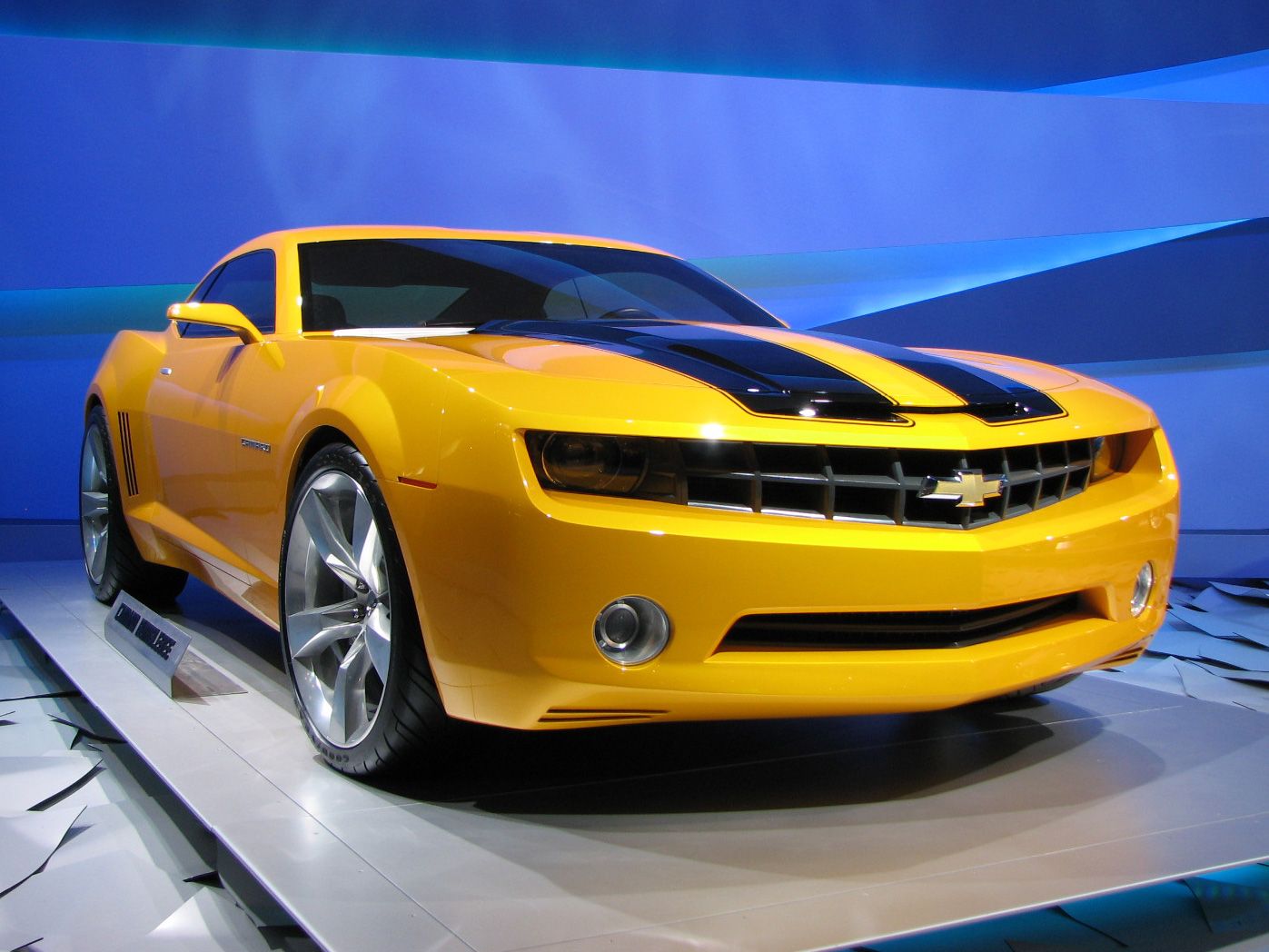
11. **2006 Chevrolet Camaro Concept (Transformers, 2007)** Who among us, after watching Transformers, didn’t secretly wish they could drive a vehicle that could transform into a colossal, sentient robot? In Michael Bay’s explosive 2007 film adaptation of the beloved 1980s anime, teenager Sam Witwicky’s quest for his first car leads him to an encounter with the Autobot scout Bumblebee. Initially appearing as a rather rusty 1976 Camaro, Bumblebee undergoes a spectacular 21st-century upgrade midway through the movie by scanning and replicating a then-unavailable fifth-generation Chevrolet Camaro concept.
This concept car had only been publicly unveiled a year prior, at the 2006 North American International Auto Show, making its cinematic debut a significant moment for car enthusiasts. While the general public couldn’t actually obtain these sleek new Camaros until 2009, the epic success of Transformers effectively served as a highly effective marketing campaign. It showed countless aspiring drivers exactly what to look for when the time came to buy their own cars, leading many to proudly choose the vibrant Bumblebee yellow to pay homage to their favorite Autobot.
Read more about: Gears of Nostalgia: Iconic Movie and TV Cars That Still Drive Our Memories
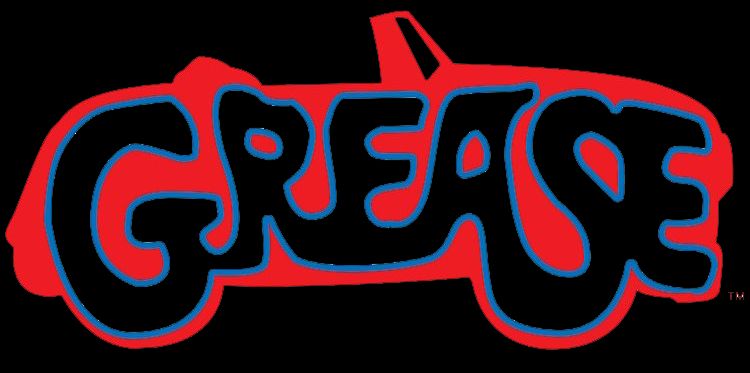
12. **1948 Ford De Luxe, aka “Greased Lightning” (Grease, 1978)** It’s “systomatic, hydromatic, ultra-matic” — it’s none other than Greased Lightning! This souped-up 1948 Ford De Luxe from the 1978 film adaptation of the iconic stage musical Grease is a car that truly has a heart and soul. John Travolta’s Danny Zuko pours his entire being into transforming this vehicle, which miraculously and inexplicably changes from its original white to a vibrant red paint job, symbolizing its newfound power and allure.
Initially, Danny’s friend Kenickie acquires the car with the intention of racing other greasers, but it is ultimately Danny who takes the wheel, steering it to victory and cementing its legend. While the annals of film history are replete with countless iconic cars, very few can boast having their very own theme song that is sung with such passion and enthusiasm. The chant of “Go, Greased Lightning! Go, Greased Lightning!” perfectly captures the car’s vibrant spirit and its unforgettable place in movie musical lore.
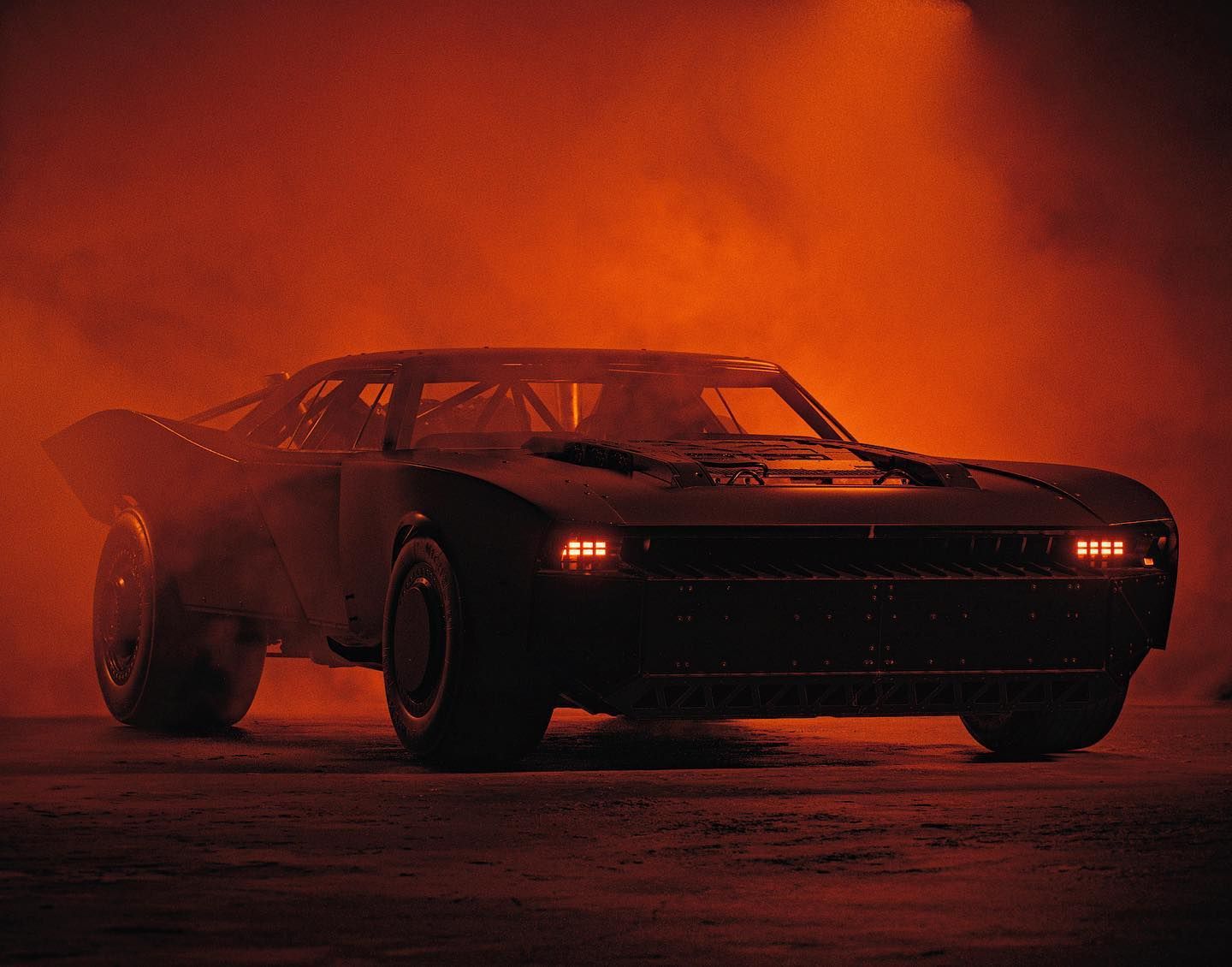
13. **The Batmobile (The Batman, 2022)** Among the myriad iterations of the Batmobile across Batman’s cinematic history, the version featured in Matt Reeves’ The Batman (2022) stands out for its unique approach: it is perhaps the closest to a real, tangible car. Robert Pattinson’s portrayal of the DC Comics superhero sees him driving a modified muscle car, a Frankenstein creation meticulously assembled from various components. This formidable vehicle notably includes the roof of a 1969 Dodge Charger and is powered by a robust Chevrolet V8 engine.
Unlike the often unreal, fantastical rides or tank-like designs of previous Batmobiles, Reeves’ version was intentionally crafted to appear more grounded and handmade, adding a raw, gritty realism to Gotham’s dark protector. Despite this grounded aesthetic, Reeves still strove to imbue the car with a sense of malevolent presence, aiming for it to feel like a possessed demon. Drawing inspiration from the chilling film Christine, Reeves explained, “I liked the idea of the car itself as a horror figure, making an animalistic appearance to really scare the hell out of the people Batman is pursuing,” a testament to its imposing on-screen impact.
Read more about: From Batmobile to DeLorean: The 16 Most Iconic Movie Cars Ever
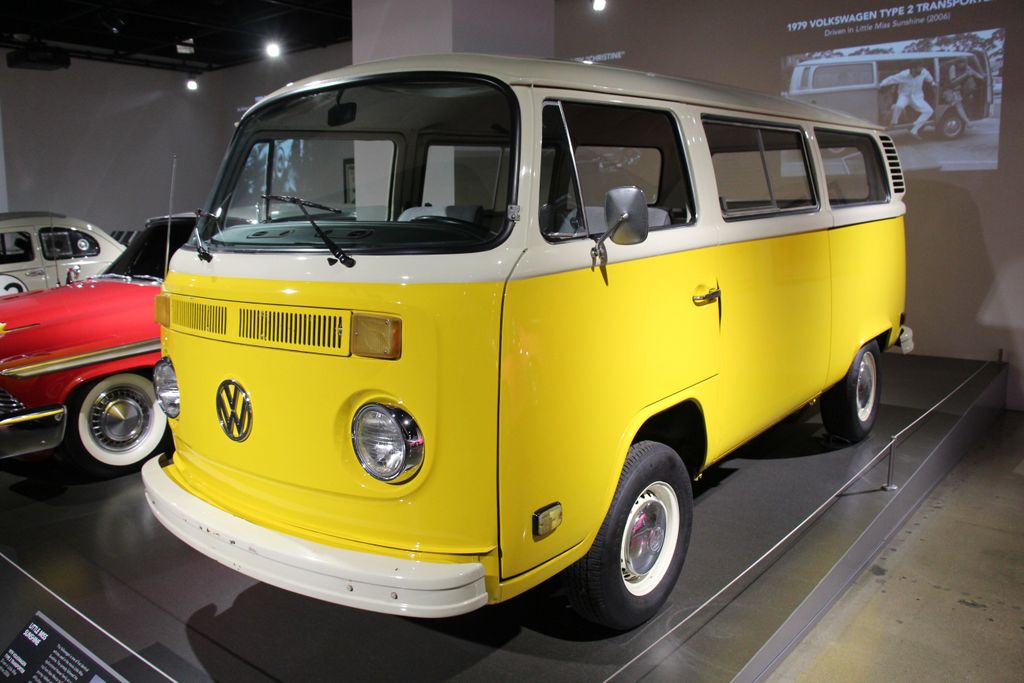
14. **1971 Volkswagen T2 Microbus (Little Miss Sunshine, 2006)** The Volkswagen Type 2, first introduced in 1950, is a vehicle deeply ingrained in cultural history, a staple of 1960s counterculture that earned it the affectionate nickname “Hippie van.” However, this iconic microbus found a new wave of cultural relevance through its central role in the beloved 2006 independent hit, Little Miss Sunshine. In the film, it serves as the primary mode of transport for the eccentric Hoover family, as they embark on an arduous 800-mile road trip to enter their youngest member, Olive (Abigail Breslin), in a beauty pageant.
Screenwriter Michael Arndt specifically wrote the Type 2 into the script due to its inherent features that made it perfectly fitting for a road trip movie, as well as its practical advantages for filmmaking. Arndt noted, “I remember thinking, it’s a road trip, what vehicle are you going to put them in? And the VW bus just seems logical, just because you have these high ceilings and these clean sight lines where you can put the camera.” This thoughtful inclusion resonated deeply with fans, culminating in a special screening of the film in July 2006, exclusively for VW bus owners at the Vineland Drive-In theater in California, celebrating the van’s enduring legacy and the joy it brings.
From the roar of an engine transforming into a time machine to the quiet hum of a magical flying car, these iconic movie vehicles are more than just props. They are characters in their own right, symbols of freedom, rebellion, innovation, and sometimes, even pure horror. Their distinctive designs, the unforgettable moments they create, and the lasting impressions they leave on audiences ensure their legendary status, proving that the bond between cinema and the automobile is truly timeless.



